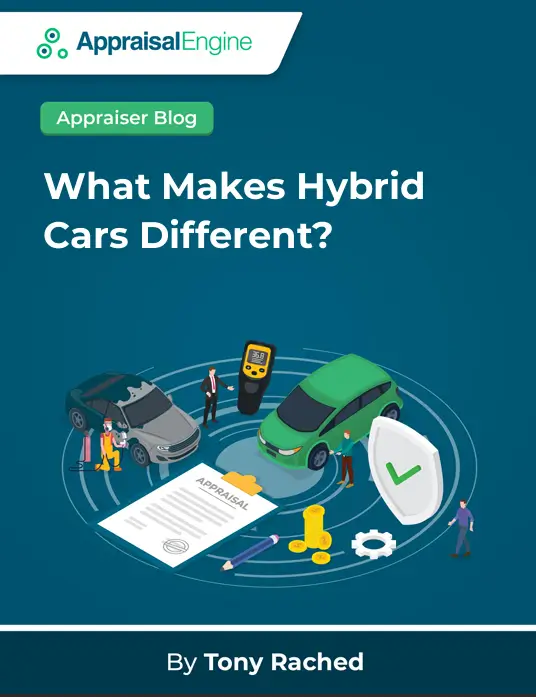Hybrid cars have become synonymous with modern automotive technology, blending traditional and electric powertrains to offer a greener, more efficient driving experience. Whether you’re a seasoned car enthusiast or a curious newcomer, understanding how hybrids work is more relevant than ever. As we continue to face global environmental challenges, hybrids stand out as both a practical solution for today’s problems and a stepping stone towards the future of fully electric transportation. Let’s dive into the world of hybrid cars, uncover some of their less-discussed aspects, and explore which type might just be the perfect fit for you.

What Makes Hybrid Cars Different? (PDF)
Understanding Hybrid Cars
A hybrid car operates on a dual system comprising an internal combustion engine (ICE) and one or more electric motors powered by batteries. This combination allows hybrids to consume less fuel and emit fewer greenhouse gases than conventional ICE vehicles. The heart of the hybrid’s appeal lies in its ability to optimize power and efficiency, switching between or combining the two power sources based on driving conditions.
How Do Hybrid Cars Work?
Hybrid vehicles integrate traditional combustion engines with electric motors and batteries, achieving a harmonious balance of power and efficiency. Here’s a breakdown of the key components that enable hybrids to enhance fuel economy and reduce emissions:
- Electric Motor: Delivers immediate torque for responsive acceleration and can independently power the car at lower speeds.
- Internal Combustion Engine: Optimized for efficiency rather than power, it activates during higher speed demands or when additional power is needed.
- Battery Pack: Although smaller than those in all-electric vehicles, this crucial component stores the electric charge that fuels the motor, recharged through both regenerative braking and the engine.
- Regenerative Braking System: This innovative feature recaptures energy normally lost during braking, converting it back into electricity to replenish the battery, thus extending the vehicle’s range and efficiency.
These elements work in concert to create a vehicle that not only conserves fuel but also offers a cleaner, more sustainable driving experience.
Types of Hybrid Vehicles
Hybrids come in several forms, each offering different benefits:
- Mild Hybrids: Generally use a small electric motor to assist the ICE, improving fuel economy marginally. These are less complex but offer minimal electric-only driving capability.
- Parallel Hybrids: Like the Toyota Prius, these have both an engine and an electric motor connected to the wheels, efficiently managing power demands.
- Series Hybrids: Operate primarily on electric power with the ICE used to generate electricity for the motor, akin to a mobile generator.
- Plug-in Hybrids (PHEVs): Feature larger batteries that can be charged externally, allowing for extended electric-only driving ranges before using the ICE.
Advantages of Different Hybrid Setups
Each type of hybrid system serves different driving needs and preferences:
- Serial Hybrids: Best for drivers who prioritize electric power but want the security of a gas engine for longer trips.
- Parallel Hybrids: Ideal for those who want a balance of efficiency and performance without the need for external charging.
- Plug-In Hybrids: Suitable for drivers with access to charging facilities who seek maximum electric driving benefits, while still requiring the flexibility of a gas engine.
Hybrid Car Statistics and Market Trends
Hybrid vehicles have seen a significant surge in popularity. From under 10,000 units sold in 2000, hybrids and electric vehicles accounted for 16.3% of U.S. car sales by 2023. This figure is projected to rise above 20% by 2024, signaling a strong shift towards hybrid technology in the automotive industry.
What Sets Hybrids Apart From Electric Vehicles?
While both hybrids and electric vehicles aim to reduce dependency on fossil fuels, hybrids offer a unique advantage by alleviating range anxiety— the fear of running out of battery power far from a charging station. Hybrids allow for longer trips using the ICE while also benefiting from the efficiency of electric power during regular commuting.
Conclusion: Is a Hybrid Right for You?
Choosing a hybrid car depends on your driving habits, environmental priorities, and technological preferences. With each type of hybrid offering distinct advantages, understanding these can help you make an informed decision that aligns with your lifestyle and values. Hybrids represent a smart choice for those looking to reduce their carbon footprint without compromising on range and flexibility. As technology advances and more models become available, the journey towards a greener future becomes increasingly accessible to everyone.





